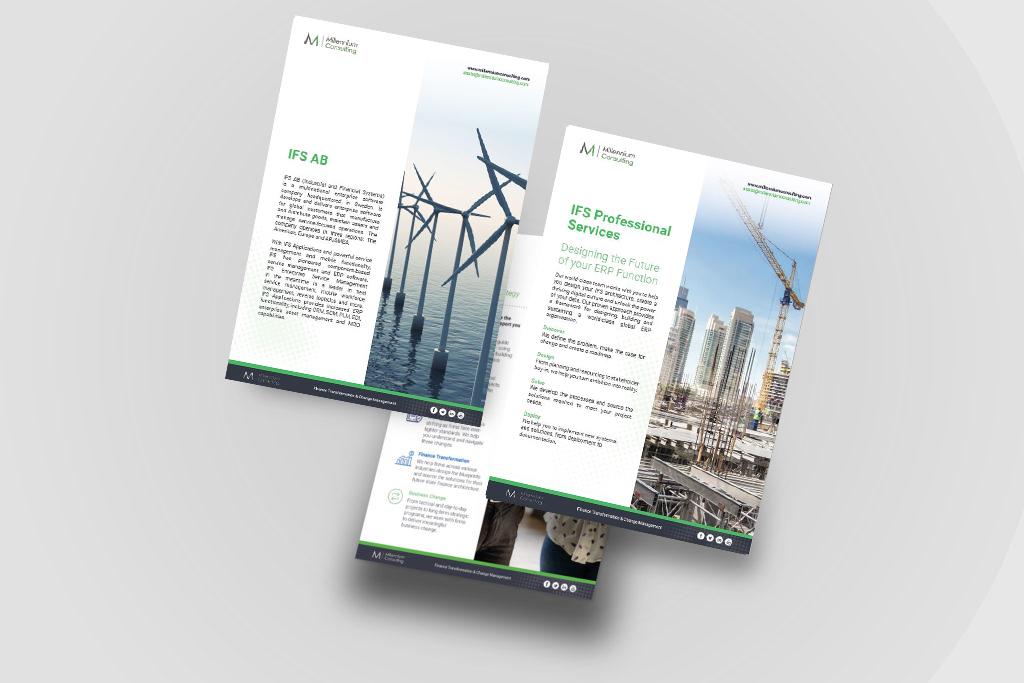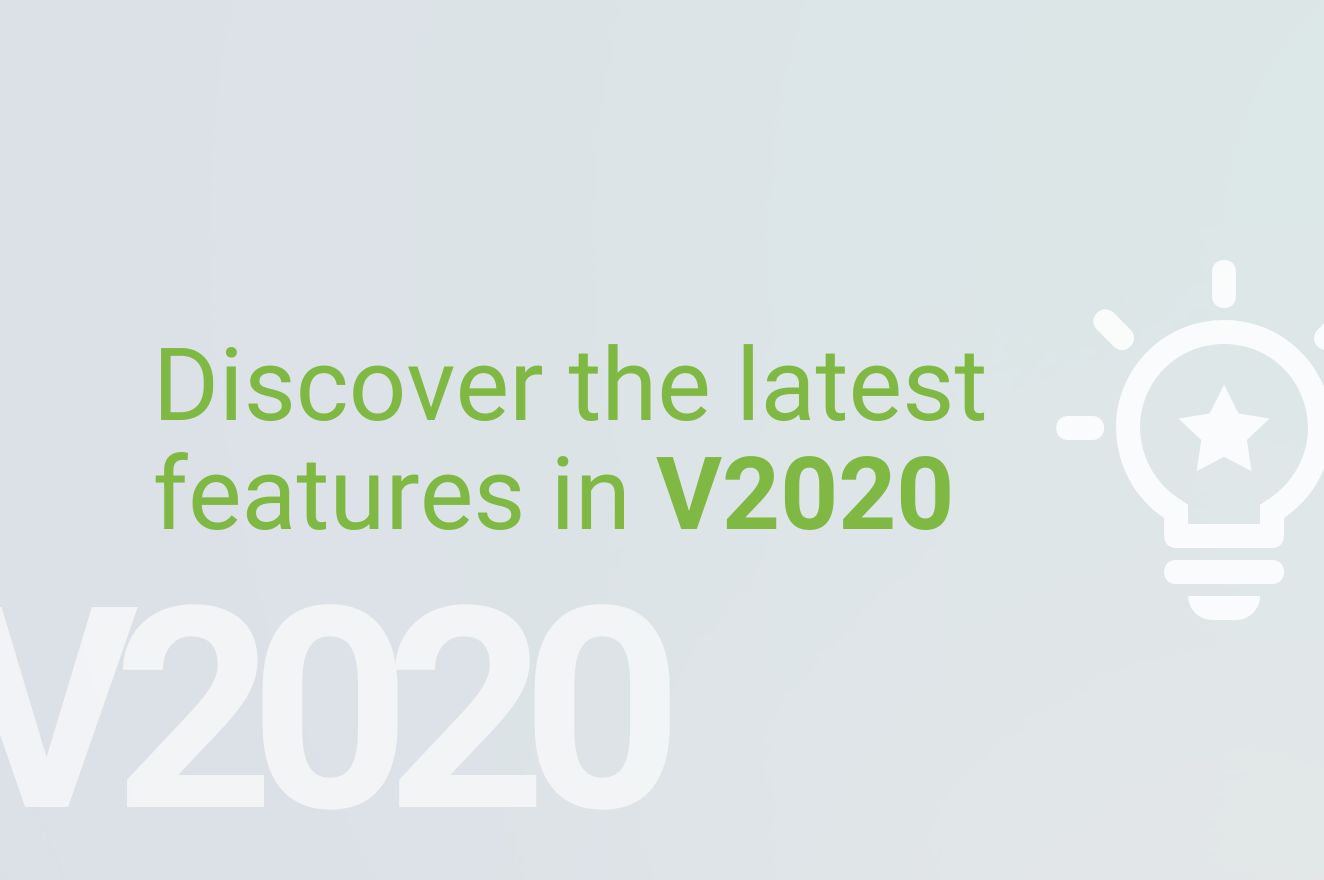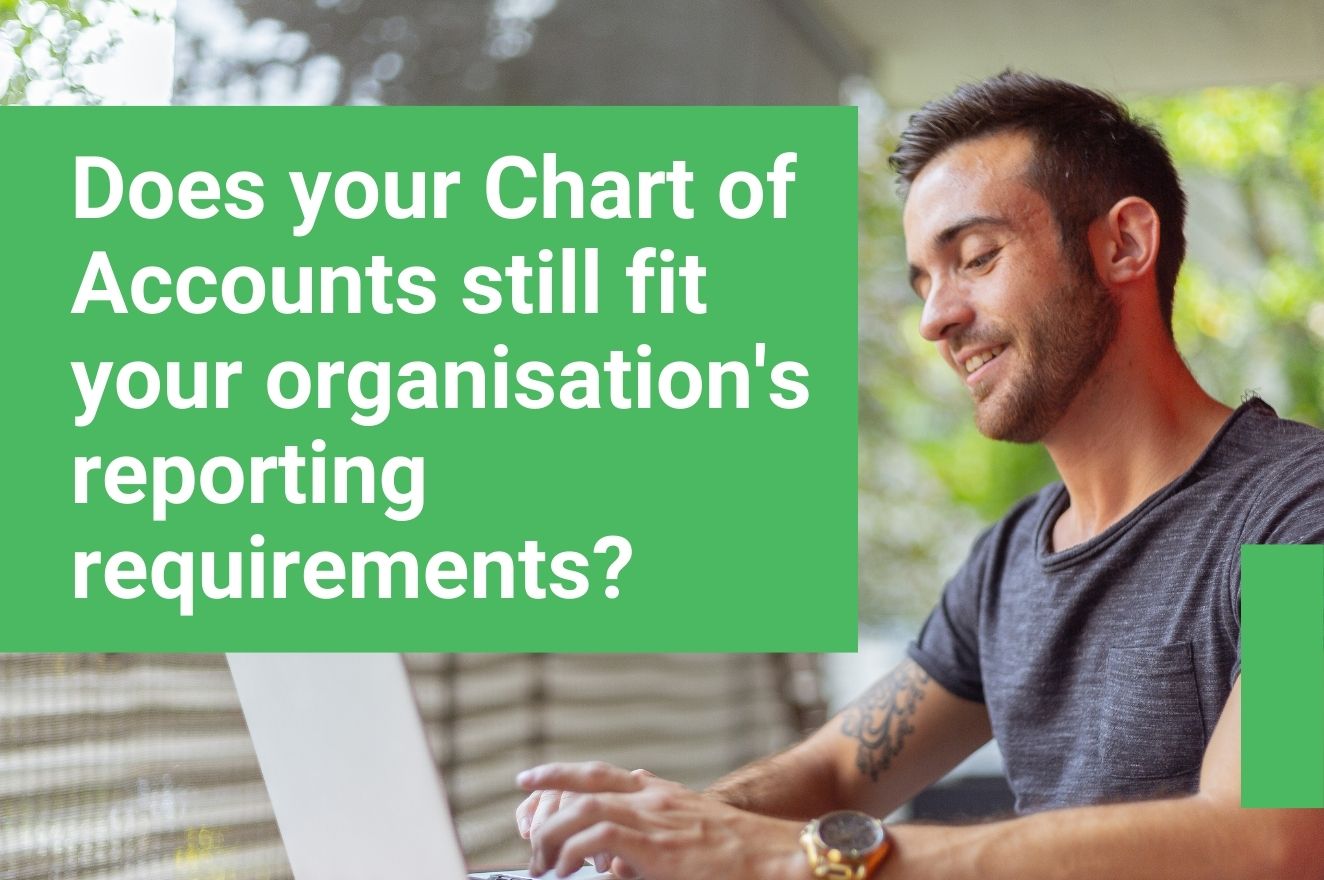IFS AB
IFS AB
IFS AB (Industrial and Financial Systems) is a multinational enterprise software company headquartered in Sweden. It develops and delivers enterprise software for global customers that manufacture and distribute goods, maintains assets and manage service-focused operations. The company operates in three regions: The Americas, Europe and APJ&MEA.
With IFS Applications and powerful service management and mobile functionality, IFS has pioneered component-based service management and ERP software. IFS Enterprise Service Management in the meantime is a leader in field service management, mobile workforce management, reverse logistics and more. IFS Applications provide increased ERP functionality, including CRM, SCM, PLM, EOI, enterprise asset management and MRO capabilities.
Five Solutions to Streamline your Accounting Process
Five Solutions to Streamline your Accounting Process
February 12th, 2021
Even with the power of Unit4 Financials at your fingertips, there are still several ancillary processes that exist within the finance ecosystem that can benefit from greater automation and streamlining.
From invoice matching to document scanning, discover the modules and add-ons that can drive efficiency and reduce operational risk in your finance function.
1. Purchase Order Processing (POP) / Purchase Invoice Matching (PIM)
Unit4 Financials Purchase Order Processing (POP) and Purchase Invoice Matching (PIM) enable you to better understand, control and manage costs.
The modules provide improved invoice matching, budgetary control and cash flow forecasting to help you:
- Approve costs before incurring them
- Enhance internal controls
- Take committed costs into account
- Consolidate your costs
- Improve your reporting output
POP and PIM enable you to make better decisions and increase project profitability across your finance function.
2. Billing
Fully integrated with the core Unit4 Financials framework, the Billing module simplifies your invoicing process – removing the need for integrations with third- party billing systems.
The user-defined product catalogue, with individual item characteristics and rules, ensures accurate, complete and up-to- date data in your invoices and general ledger.
You can also easily design invoice templates, define invoice layouts and statements.
The module provides you with:
- Item Catalogue for Purchasing & Selling
- Drag and drop functionality to design and customise the layout of screens
- Configurable data entry screen
3. MBilling Icorp
For firms that require complex functionality (or need to send out high volumes of sales invoices), a comprehensive sales invoicing/ billing solution is essential.
Seamlessly integrated into Unit4 Financials, MBilling powered by Icorp supports high-data volumes and contains powerful billing / sales invoicing functionality – including a comprehensive rules engine, smart algorithms and data bridging.
Transform your accounting processes with intelligent software that can extract information from any source system, reducing operational risk and improving efficiency.
4. Invoice4 Document Scanning & OCR
Transform your approach to the Accounts Payable process with Invoice4, enabling you to receive 100% of your invoices electronically from day one.
By directly receiving purchase invoices (whether paper, PDF, email, XML or EDI), Invoice4 introduces a new starting point. It allows you to view accurate, cleansed electronic invoices from your existing Unit4 Financials system without the need for extensive data entry and associated errors.
Fully integrated and certified, the solution provides the lowest risk and most cost-effective means of capturing purchase invoices, giving you a great head start in processing invoices with the highest levels of efficiency and effectiveness.
5. Digital Invoicing
Digital Invoicing gives you an efficient method for transmitting and storing invoices – streamlining your Sales & Purchasing processes.
It also helps you to reduce the use of paper and the associated costs of printing, shipping and storage.
The module allows you to produce, transmit and store electronic invoices in XML format – giving you greater control over the elements contained in each document.
It provides you with the ability to map and post incoming invoices into Unit4 Financials, while producing XML files from outgoing invoices.
Contact us for further details
If you would like any further information on this subject, please submit your details and one of our experts will be in touch.
Delivering Finance Transformation: A pandemic shouldn’t mean pushing back
Delivering Finance Transformation: A pandemic shouldn’t mean pushing back
February 10th, 2021
As of early 2021, the backdrop for a major finance office transformation project could hardly look more challenging. Organisations remain in recovery and stabilisation mode. Roles have been amalgamated, workforces are largely scattered and budgets are under pressure. So does this mean that transformation ambitions are being put on ice for the time being? Far from it.
According to Deloitte, 73% of organisations were using automation, machine learning and similar technologies at the end of last year, up from 58% prior to the pandemic. These capabilities certainly proved their worth, with two thirds (68%) of business leaders using automation to respond to the impact of Covid.
This is exactly the time when legacy systems and processes could benefit from an injection of efficiency. But if the finance department is grappling with organisational disruption, how do you go about getting your plans off the ground?
Here’s a closer look at the Covid-related barriers to finance transformation execution, and how to overcome them.

The Challenges
Competing Priorities
According to your original plans, 2020 may have been your year for overhauling outmoded finance processes and updating your reporting capabilities. However, once the pandemic arrived, priorities shifted. CFOs frequently take the strategic lead on transformation, with considerable input from IT. Inevitably though, IT departments suddenly found themselves having to devote time and resources to the rollout of technologies such as video conferencing, VPNs, laptops and printers for home use, as well as the provision of remote support. New tech for finance may have got pushed to the back of the queue.
By now, the initial technical set-up woes linked to the sudden shift to home working are largely behind us. But if IT is still focused on things like cloud architecture, the introduction of new collaboration software and enabling blended home/office working, it could be that the implementation of specialist finance technology remains pretty low down the priority list.
A reduced workforce
When the staffing budget is under pressure, the office of finance is not necessarily immune to cutbacks. And if team members are furloughed or let go, it usually means a larger workload for those remaining.
Against this background, the focus may very well be on keeping the lights on: i.e. while focusing on core tasks with a skeleton staff, the feeling is that there simply isn’t the bandwidth to devote to transformation projects.
Scattered employees
Typically, a finance transformation strategy covers a review of organisation-wide reporting processes, a review of your data sources and architecture and side-by-side analysis of possible new solutions to adopt. Next comes implementation, migration, training and optimisation. It’s a lot – and it usually involves multiple stakeholders from across the company.
Effective communication is key to the delivery of any project; especially if you have to coax busy people into action! In normal times, when everyone is in the same building, all of those ad-hoc mini-meetings and impromptu watercooler moments can actually go a long way in keeping things moving. If interaction is currently mostly limited to your morning Zoom meetings, it can be hard to build any kind of impetus.

The Solution: Getting Finance Transformation Back on Track
Restate the business case for transformation
You can characterise technologies as either ‘business critical’ or ‘nice to have’. And right now, many organisations are focusing solely on the former.
This is the time to restate the case for office of finance transformation, not as a luxury, but as something that’s absolutely critical to building business resilience. By way of illustration, here’s a rundown of what’s typically expected of the finance department in the current climate, and at how transformation projects can directly address these critical requirements:
We expect finance to ‘do more with less’. New capabilities such as automated close and consolidation, budgeting and forecasting will help reduce the huge amount of resources expended on routine tasks. Regardless of any staffing pressures you may be facing, your regulatory and compliance burden remains stubbornly real. Specialist solutions to address specific compliance issues (for instance, lease accounting and revenue received) will go a long way in helping you stay on top of your obligations.
We need finance to be more involved in strategy. Updating your reporting capabilities will reduce the time needed for manual-heavy tasks, freeing up time to devote to strategy. Also, for your input to be of real value, you are going to need the ability to track, measure and analyse key metrics and deliverables.
We need to predict future events and respond quicker to change. Volatility and unpredictability are likely to be permanent features on the landscape. When Gartner asked top CFOs to list their priorities for 2021, “Advanced data analytics technologies’ came top. To us, this comes as no surprise. Weathering the storm demands the ability to model for a range of scenarios, to analyse rapidly changing conditions in real or near-time, and to pivot quickly: something that’s very difficult if you are still struggling with Excel for modelling.
As a CFO, you may currently be experiencing board-level pushback to transformation due to budget restraints or staffing limitations. If so, it’s worth stressing that if the finance function is to deliver the type of business-critical insights expected of it, it is imperative that processes, workflows, reporting and analytics capabilities are rendered fit for purpose.

A new approach to management
With authorisation to proceed with your transformation strategy in place, it’s important to consider the practicalities of execution.
If you have led internal change projects in the past, bear in mind that this one may require a slightly different approach. Remote working means that short-notice, face-to-face roundtables may no longer be an option. The same goes for being able to pop your head around colleagues’ doors to check on progress.
Tip: in addition to regular video-con updates, where multiple stakeholders have designated tasks to complete in order to progress the project, a simple project management tool such as Trello can make all the difference in keeping matters on track.
Also, when it comes to actual implementation, beware of false assumptions on what is and isn’t possible remotely. You may be pleasantly surprised here. For instance, Millennium Consulting’s experts are routinely able to manage and execute all aspects of new finance technology implementation remotely. This includes scoping and planning, right through to migration, installs, configuration and training.
Filling in the skills gaps
Even in ‘normal’ times, managing and executing finance transformation is not easy. It demands expertise in data management and architecture, reporting best practice, an eye for the right technology to avoid making expensive mistakes, the know-how to configure it correctly and put it to work, together with project management experience to bring everything together.
The skillset may seem daunting: even more so if Covid-related budget restraints make it difficult to hire new talent. This is where external input can prove invaluable. Rather than the ‘hard sell’ on favoured technologies, or rigid, needlessly expensive support packages, what you really need is unbiased expert advice and targeted input to complement your own internal resources.
Ready to get your finance transformation project back on track? Speak to Millennium Consulting today.

Contact us for further details
For targeted help in addressing each of these questions, submit your details and one of our experts will be in touch.
AI replace human decision-making
AI replace human decision-making
February 4th, 2021

Myths Busted: AI is no Replacement for Human Decision Making
Artificial intelligence (AI) is now firmly within the mainstream. Microsoft recently found that 56% of UK organisations are using it to some degree. The same research also pointed to a clear competitive advantage linked to AI, with businesses already using it performing an average of 11.5% better than those who are not.
For forward-thinking businesses, technologies such as machine learning, national language processing and predictive modelling are helping them make sense of potentially vast amounts of data, reduce error and boost output.
But what happens when the machines go one step further? It is one thing for algorithmic analysis to flag up a problem. The controversy arises where the system automatically generates a solution, decides on a course of action and executes it, eliminating the need for human intervention.
It is easy to see why individual employees may push back against this type of technology, and how this could be a very real barrier to transformation. After all, why would you actively welcome a new tool, if it threatens to make your role redundant?
Meanwhile, last summer’s exam furore over predicted grades demonstrates that algorithms don’t always get it right. Taking into account issues such as accountability, regulatory oversight and company reputation, businesses themselves are right to be wary of relying solely on AI for important decisions.
So how do you get it right? As we’ll see, the most effective uses of AI within the workplace don’t actually replace human decision making. Rather, they enhance it. Here’s how…
AI frees up bandwidth
What do we want from our departmental managers, finance team and other key staff?
Almost certainty, if you can possibly help it, you do not want highly-skilled employees bogged down in routine, transactional tasks. You want them to put their expertise directly to work, solving business problems and driving strategy.
This actually dovetails with what employees themselves want. Direct involvement in the decision-making process tends to boost engagement. And as Gallup demonstrated, highly engaged employees tend to produce better outcomes.
So where does AI fit into this? The fear is sometimes that the software will end up doing the decision-making for you, resulting in reduced scope for human input. In reality, most businesses find that the reverse is true.
AI lets employees process and analyse data much faster and more accurately than they would otherwise. Take your accounts department, for instance: through machine learning, they have the potential to process transactions, to automatically unearth and address irregularities in record time, and with the minimum of human intervention. The time and input required for routine reporting is dramatically reduced.
Meanwhile, with solutions linked not just to finance but also to areas such as manufacturing, logistics, marketing and customer care, AI concepts such as natural language processing are being put to work. For example, it’s becoming possible for employees to execute all manner of routine tasks simply by asking a voice-enabled communications assistant.
Businesses are increasingly finding that AI is reducing the time required for necessary but routine work. These are precisely the type of tasks that eat into employees’ time and prevent them from taking a more active role in decision making.
PwC found that in forward-thinking firms, 75% of business analysts’ time is spent on developing insight. In simple terms, if you want humans to bring their experience to the table and become more active in decision making, AI is pretty much essential technology.

AI delivers the full picture
What do customers really think about our brand? Where is the next big trend coming from? How can we tell when a client is about to leave for a competitor, or a piece of machinery is about to malfunction?
Conventional performance management solutions and other types of business software are fine for basic number crunching but isn’t always capable of answering these kinds of big questions.
Humans are much better at interpreting nuance. Trouble is, we cannot be expected to read absolutely everything that may be relevant to business decisions, and we can’t be on call 24/7.
An estimated 73% of company data goes unused for data analysis. Often, this is because certain datasets are too difficult to interpret: data is unstructured, or else there’s just too much of it.
AI happens to be extremely useful at sifting through and making sense of data that would otherwise be out of bounds to decision makers. Examples include sentiment analysis tools that can constantly scan swathes of content on social media platforms to pick out insights, or finance regulatory tools that can ‘read’ complex documents and flag up compliance issues. Over time, a manufacturing plant monitoring tool can ‘learn’ to recognise the various combinations of readings that might indicate performance issues. When these circumstances arise, the issue is automatically flagged up.
In these use cases, AI opens up data streams that might otherwise be difficult to interpret in large quantities. It doesn’t have to make the role of human decision makers redundant. Rather, it picks up on insights that would otherwise be missed and makes sure you are in possession of the full facts before deciding what action to take.
Looking to the future
What about AI’s role when it comes to day-to-day processing decisions?
Take decisions linked to consumer credit, for instance. Where individual employees are left to decide what credit options should be made available to customers, it’s easy for bias to creep in, or for inconsistencies to emerge. If you have an AI-based tool that’s able to process a customer’s details and assess their risk based on set rules, there’s the potential for much more consistent decision making across the business.
But of course, any AI solution is only as effective as the algorithm behind it. To avoid bias (along with risky approvals), continued human oversight is essential. Otherwise, you risk systemising into the decision-making process the very things you want to avoid.
At its best, AI disrupts the human decision-making process. With the ability to read and interpret vast quantities of data, it has the potential to put relevant information at your fingertips faster than ever before.
A recent estimate for the banking sector suggests that we can soon expect decision-making processes to be 34% informed by machine algorithms and 66% by human judgment. This is probably a realistic interpretation of what the future holds: AI will have a big part to play in informing decisions, but the final decision will remain with people.
Discover the latest Unit4 Financials features in V2020
Discover the latest Unit4 Financials features in V2020
This post shares all the functionality available on Unit4 Financials V2020. If you are upgrading from an older version of Financials, you will get all of the below features plus all the very latest features from V13, V14 and Continuous Release.
The naming convention may have changed, but the latest version of Unit4 Financials offers all the new features you would expect. Unit4 Financials V2020 (rather than V15) is available now.
If you are on V14 remember that at end of 2022 it will fall outside the Unit4 supported software window. If you don’t upgrade before that date, you may incur extended support charges from Unit4.
Now may be an ideal time to look at the options that are available to you and the benefits you will gain from an upgrade.
New features arriving in V2020 include:
- Element Authorisation
- Change Log Anonymisation
- Provisional Year End
Plus a wide range of technical improvements…
Along with the additional functionality, V2020 brings a new approach to regular updates – adding a version number to the end, based on the quarter it is released in. For example, the current release is V2020 Q3.
It is also important to note that V13 and all previous versions of Unit4 Financials will no longer receive full support.
What's new in V2020?
Full Year End
- Sum all the profit and loss accounts, posting the NET figure to retained earnings in the balance sheet
- Post the closing balance sheet figures to the period 0 of the following year
- Close the year of the Year End being processed, preventing any further postings
Provisional Year End will perform all the processing of a full Year End, but will not close the year being ended, allowing you to continue posting to that year.
Any subsequent Year End processing will perform incremental postings for those applicable to the year being ended. These postings will have an input date greater than the one specified for the last provisional Year End.
Example: If your Year End is 31st December, you can run the process before 31st January in provisional mode, so that your balance type reports will capture carried forward balances in period 0 when you run period end reports for period 1.
Undo Year End
You can now undo both provisional and full Year Ends. This will cancel all Year End journals posted to the final (9999) period for the latest year in which a Year End has been run, and to the opening (0) period of the next year.
If a full Year End is undone, the minimum year will be reset to the previous year. The Undo Year End process undoes all the Year Ends that have been run in the selected year, not just the last Year End process itself.
Example: If you undo the year 2019 in 2020 (having also run 2017 and 2018 Year Ends in 2020), it will undo all three years.
Browse Transaction Enhancements
Browse Transaction gives you a more powerful way to interrogate the database, using the metadata in a way that provides the same functionality as Browse Details.
Company Master
You can now specify an address category on the Procurement tab to automate the selection of the ordering address in Procurement.
This overcomes a previous issue that meant it was only possible to set one default address for a supplier record, which had to be set correctly for remittances. This new feature allows multiple default addresses based on the function module.
It also allows you to change the Actuals and Turnovers balance codes on the company master after documents have been posted in the company.
Intercompany Control Account
In the intercompany module, you can now add a customer or supplier to the control account specified in the destination and receiver masters – as well as to elements inserted when those accounts contain wildcards.
This means that one company can now send a sales invoice document to another company, and it will be received as a purchase invoice document.
Pay
The payment period and/or date can now be changed on a payment proposal after it has been generated via a new ‘Change payment period’ option on the Pay/Collect actions menu.
This feature is controlled by functional security on the Capability Master and allows you to amend the payment period without aborting the proposal.
Reconciliation
Reconciliation will now record the date of reconciliation. This will default to today’s date unless a date is set via the Reconciliation Master, or at run time.
The Finance user that ran the reconciliation process will be recorded as the Reconciliation user.
The Reconciliation date and user are also available as vocabularies for use in Selector and Presenter masters for use in reconciliation reports.
Fixed Assets
You can now set up scheduled tasks to depreciate assets.
Invoice Matching
It is now possible to input a non-matchable invoice or credit note where the invoice total is a different sign than the tax total.
LRN Housekeeping can also now be run without posting a journal to Finance.This resolves two previous issues:
• When running housekeeping, a journal was posted to Finance which meant that you had to cancel the document
• If the Right Left lists had been changed in Financials since the receipt of the goods, this meant that housekeeping would fail
Procurement
Orders that are automatically created by conversion from a requisition can now be automatically submitted to workflow, removing the manual steps for browsing and submitting to workflow.
Billing
It is now possible to copy a document in Browse.
Unit4 XL (CodaXL)
XL is now fully compatible with 64-bit Excel, in addition to the 32-bit variant.
Public Bulk Data Web Services
V2020 now provides:
• Generic Browse/Select Chunked
• Generic Browse/Fetch
This gives you the ability to query exceptionally large datasets with an interface spread over multiple requests.
Customiser
You can now generate and customise forms created at runtime – as well as import and export customisations.
Browser Warning
A warning is now displayed if the results of a browse have been limited by the security settings.
If the user is restricted to certain accounts in their capability settings, the user will be warned that not all the data has been returned.
Copy Company with Finance
You can now copy element flexi-field data when using ‘copy company’ to copy elements.
You can also copy element template customisations when using ‘copy company’ to copy element template masters.
OpenID Connect Authentication
User claims for OpenID Connect can now be configured from the Security section of the Administration Console.
A painless Unit4 Financials upgrade starts here
If you are on V14 remember that at end of 2022 it will fall outside the Unit4 supported software window. If you don’t upgrade before that date, you may incur extended support charges from Unit4.
Now may be an ideal time to look at the options that are available to you and the benefits you will gain from an upgrade.
Rules engine and subledger technology: what every CFO needs to know
Rules engine and subledger technology: what every CFO needs to know
November 24th, 2020
Transform your processes and liberate your finance team
From revenue recognition through to the treatment of leases – not to mention a raft of sector-specific rules and standards, the compliance burden faced by CFOs is growing year by year. Managing it requires effective internal controls, auditability and of course 100% accuracy.
Added to this, the routine reporting workload remains as relentless as ever. Familiar tasks such as reconciliation and final report preparation continue to consume a huge amount of time. In fact, currently, 87% of finance professionals are still obliged to work overtime in the run-up to the financial close.
Expectations of the finance department are also changing. With high volumes of valuable data at their fingertips, there is growing pressure to put this data to work and to use it to generate solutions to business problems. CFOs themselves are keen to find new ways to add value to their organisations. The trouble is, without streamlining routine operations there is rarely time for finance to contribute more fully and help formulate corporate strategy.
A subledger system integrated with an accounting rules engine can help overcome this deficiency. With this type of technology, transactions can be stored, processed and posted automatically to the general ledger. For the finance department, this means less time spent on manual tasks, increased accuracy and greater compliance with standards. It also frees up internal resources, providing more time to focus upon added value tasks and strategy.
This guide aims to provide an insight into the use of subledger technology, its benefits to the CFO, how it can help address specific compliance requirements and what should be looked for in a subledger.

Part 1: Subledger technology explained
The general ledger is the foundation of a company’s accounting system. As a key reference point for the finance team and other business insiders, keeping it accurate and up-to-date is essential.
For any large organisation however, hundreds or even thousands of weekly accountable transactions are not unusual. Many will be straightforward, while others will need to be processed in a particular way to comply with internal policies and with general accounting principles and standards.
Manual processing of these transactions can be both resource-intensive and subject to error and therefore an automated subledger approach offers more efficient processing.
Key characteristics of subledger technology:
• The subledger provides a database for logging, storing and processing a subset of double entry accounting records.
• Subledgers can be set up for any areas of the general ledger e.g. accounts payable, accounts receivable, fixed assets, product inventory and purchasing etc.
• An automated system allows multiple subledgers to be connected to the general ledger.
• Transactions are automatically generated and posted to the general ledger.
Transactions however are not always straightforward and it’s not always enough to merely summarise a group of transactions and post them to the general ledger.
This is where a rules engine can help. A rules engine is essentially a software tool that automates the steps that make up a business process. With a subledger solution, you can apply specific rules to determine the way in which transactions are processed (before they are posted to the general ledger) to comply with all relevant accounting principles and standards, internal policies, as well as handling what can often be complex multi-entity, multi-currency calculations. Rules can be set and then applied to ensure transactions are processed correctly.

Part 2: The benefits provided by using a subledger
More effective use of time and resources
Especially in the current climate, businesses demand up-to-date insights and new ideas. From workforce and asset deployment through to analysis of product-line profitability, they need to drive efficiency and identify new commercial opportunities. In all these areas, the CFO has an important role to play.
However, if the finance department is spending time mainly on routine tasks such as transaction processing, reporting and compliance, then there simply isn’t the bandwidth to devote to adding value to the organisation. What can be automated to deliver greater efficiency? This is the key question to be addressed by any finance department seeking to become more strategy-focused.
PwC highlighted the fact that in areas such as management reporting, tax and general accounting, there’s the potential to free up between 30 and 40% of time by introducing automation and process efficiencies. By dramatically reducing the time needed for manual transaction entry and reconciliation, subledger technology goes a long way to help the finance department become a valuable and trusted partner to the business.
Greater consistency and fewer errors
Subledger technology allows transactional data to be processed and automatically posted to the general ledger according to pre-defined rules. With large organisations and groups, it’s especially easy for processing inconsistencies to arise. Through universal rules, processes are rationalised, eliminating manual-entry error and inconsistency, providing increased confidence in the integrity of the financial results.
Enhanced compliance and auditability
Regulations such as IFRS15, IFRS16, IFRS17 and LDTI require finance departments to ‘show their workings’; to have their underlying operational data available for disclosure in order to demonstrate adherence to regulatory standards. Using the right subledger solution, allows drill down to the general ledger at transactional level and provides a full audit trail. Likewise, the rules set for data processing and accounting are transparent and easily verifiable. In the event of any regulator queries a solid foundation for compliance can be easily demonstrated.
An up-to-date financial picture
During the current year, the COVID-19 pandemic has demonstrated how quickly market conditions and expectations can change. The general ledger provides the foundation not only for accounting, but also for rolling budgets and forecasts. To provide the most value, it needs to keep up with what’s happening on the ground. Subledger technology reduces the time and manual input required for transactions to be fed to the general ledger. It helps transform the general ledger from a periodically revised accounting tool into a reliable and up-to-date information asset.
Enabling analytics and generating insight
The subledger’s primary purpose is to allow automated processing and data feeds directly through to the general ledger. But the general ledger doesn’t need to be the only destination for this data. Depending on the specific rules set, the rules engine powering the subledger effectively cleanses transactional data and ensures that data from multiple sources is processed in a consistent manner.
This helps the creation of a ‘ledger-certified’ foundation not just for statutory accounts but also for management reporting and analytics. As well as connecting to the general ledger, a feed can be set up directly from the subledger to data analytics or business intelligence tools of choice.

Part 3: Compliance troubleshooting: Subledgers and accounting standards in focus
Here is a closer look at how subledger technology can help tackle the compliance challenges raised by specific accounting standards and principles.
IFRS 15
The challenge
The ‘revenue recognition’ standard determines how revenue should be recognised and reflected in an organisation’s financial statements and balance sheet. It sets out a standard five-step model for recognising revenue effectively. For high volumes of long-term contracts with multiple elements, there is a considerable challenge in making a distinction between the different elements in the contract, recognising revenue for each of them.
The solution
At what point should revenue from a particular contract be recognised within the profit and loss and balance sheet? A subledger with a suitably configured accounting rules engine can help manage data processing, calculations, reporting and an automatic feed to the general ledger, complete with a clear audit trail. This ensures that consistent revenue recognition policies are applied, keeping the general ledger up to date, while also providing the ability to drill down into individual contracts to check data regarding, for instance, contract balances, performance obligations and contract costs.
IFRS 16
The challenge
IFRS 16 marks a once in a generation shift in the categorisation, calculation and presentation of leases for financial reporting purposes. The most obvious impact concerns the layout of financial statements: specifically, a wide range of financial liabilities that were previously held off-balance sheet as operating leases must now be shown on the balance sheet.
Behind this presentational change, there’s a significant and ongoing data management challenge. As a start, you need to identify and classify all leases that come into play within the business. For the relevant calculations, data must be standardised – often filling in the gaps arising from incomplete information. It can prove particularly resource-heavy where the information needed is spread across different departments and formats and these is extensive reliance upon spreadsheets.
The solution
A dedicated lease accounting subledger helps ensure that all relevant leases are appropriately accounted for on the balance sheet. The lease subledger will also need to include sections covering areas such as discounting of future lease payments, ROU asset depreciation and liability amortisation. This information needs to be accessible when needed without the general ledger becoming cluttered by detailed entries for each lease.
A subledger solution preconfigured for IFRS 16, allows automation of complex calculations (e.g. asset depreciation and applicable interest). It also means that all relevant information such as changes in rates or terms, extensions, renewals or impairments can be easily managed, without the need for multiple data entries.
IFRS 17
The challenge
The stated aim of the new reporting standard for the insurance industry is to provide greater transparency concerning an insurers’ financial position, performance and risk exposure. For insurers on the ground, this means collating and processing potentially enormous amounts of additional data, such as historical policies and an increased number of calculations. Given the volumes of data involved, the complex interplay of different categories of actuarial and accounting data and the calculations required, the sole use of a general ledger for accounting becomes practically unsustainable.
The solution
What’s needed is a subledger and accounting rules engine specifically configured for IFRS 17 compliance. The standard requires regular recalculation of the performance of applicable insurance contracts over their lifetime. A subledger solution can allow this to be carried out automatically, giving the ability to store the calculation results at each measurement period – and provide a fully auditable data trail.

Part 4: Choosing a solution
Start with your specific problem. If you already using an enterprise resource planning (ERP) system such as SAP or Oracle then you are likely to find that it has a subledger component. A good example is the S/4 HANNA-based subledger for SAP which provides a ‘catch all’ solution aimed at handling the regulatory and reporting requirements for financial institutions, insurance companies and similar enterprises.
Such solutions may carry impressive functionality, but because they are designed to handle a range of compliance needs, they often demand a considerable degree of bespoke configuration for them to address the problems to be solved. If there is the need for a quick implementation with a minimum of technical input, an out-of-the-box subledger solution configured for specific compliance requirements may be a good option.
Examples include the IFRS 16 lease management solution provided by Legerity and the IFRS 17 insurance accounting subledger from Aptitude.
Aim for seamless integration
Adopting a subledger solution does not have to mean a complete overhaul of your existing technology stack. Millennium Consulting specialises in helping equip you with the type of subledger technology that addresses your specific requirements, while ensuring full integration with existing systems.
Supporting wider transformation initiatives
Compliance is often the primary driver of subledger adoption however organisations may require a more efficient system to handle the increased data processing and calculation burden that the new standard brings. A compliance challenge may also be the springboard to achieve additional business benefits. The subledger provides a way to harness potentially enormous volumes of granular data and provides the opportunity to consider how else this data may be put to work for the purposes of analysis, forecasting and delivering timely business insight.
What next?
Starting with your specific goals and operational and requirements, Millennium Consulting can help you implement best-of-breed subledger technology and processes. To keep on top of compliance, assign finance team resources to more profitable use and to build the foundations for stronger business insight, speak to Millennium Consulting today to discover how we can support you.
Contact us for further details
Submit your details and one of our experts will be in touch.
Does your Chart of Accounts still fit your Organisations Reporting Requirements?
Does your Chart of Accounts still fit your Organisations Reporting Requirements?
Are you able to generate the reports that your business requires straight from Unit4 Financials, without resorting to an end-user computing solution such as Excel? If not, then your current chart of accounts may no longer be fit for purpose.
The element structure within Financials allows for huge flexibility giving users the capability to produce any number of customised reports. However, to make the most of this level of flexibility it is vital that your element structure is optimised to allow the correct information with minimal manual intervention.
As your business grows, the nature of the reporting requirements changes, and so your original chart of accounts may no longer be suitable to support this. Whilst most small businesses initially set up their accounting to meet GAAP and FRS requirements, they can often overlook the importance of having a robust management accounting structure.
Management accounting allows you to create financial reporting that provides you with the information to manage your business. With a suitably designed chart of accounts, you can fulfill both your internal management accounting and statutory reporting.
Remodeling your chart of accounts can allow you to produce both your management and statutory reporting using standard Unit4 Financials functionality, such as generic browse. It will also allow you to use more powerful analytical tools like metadata queries to produce more value-added reporting.
A appropriately designed chart of accounts will enable you to meet the reporting needs of both Managerial and Financial Accounting.

Here at Millennium Consulting we can help you design a new chart of accounts and element structure within Unit4 Financials to reflect your current business needs. Our skilled staff can undertake workshops to understand your organisational reporting needs and create an element structure and chart of accounts that will drive your business.
Published October 23rd, 2020
Contact us for further details
If you would like any further information on this subject, please submit your details and one of our experts will be in touch.
The future of the cloud: key trends in focus
The future of the cloud: key trends in focus
October 5th, 2020
With IT departments facing budget pressures, we might have expected cloud adoption plans to be put on ice. But in fact, the opposite has been the case. Recent trends have shown that financial constraints actually strengthen the case in favour of cloud migration.
Here’s a closer look at why, despite a challenging business landscape, cloud-based digital transformation has continued apace…
The cloud and business survival
Business continuity was the big priority in the first half of the year. As lockdowns took hold, firms needed new solutions for communication, collaboration, as well as remote access to business data and applications. Cloud-based services proved pivotal in ensuring operational continuity.
In its global cloud services overview, Canalys found that spending on cloud infrastructure services jumped 11 percent in Q2 2020 compared to the previous three months, and was up 30 percent year-on-year.
Fast forward to the autumn, and most firms have already covered the basics to adjust to remote working. So does this mean we are about to witness a dampening down on cloud adoption? It seems not.
COVID-19 has forced organisations to reassess their strategic priorities. KPMG, in its recent Enterprise Reboot report found that whereas the emphasis back in March was on continuity, “the immediate focus is now on survival”. Companies are investing in the areas where their cash is likely to have the biggest positive impact.
This includes investment in technologies that help companies maintain customer and stakeholder trust, to keep remote workforces connected, and to ensure that businesses are prepared for further disruptions.
Business decision making is another priority area. To compete, businesses need the ability to react quickly to changing circumstances, which means the ability to query data at speed is essential. On top of this, IT architecture must be compatible with increasingly demanding data analytics methods.
It means that more than ever, organisations need data warehousing solutions that are powerful, scalable, flexible and secure. This is precisely the type of environment that the cloud can offer. 38% of companies plan to increase their cloud spend this year (up from 31% last year). Small wonder that cloud adoption is continuing apace.
Slow adopters change their attitude
Some sectors have been markedly more reluctant than others to embrace the cloud. Factors holding organisations back include regulatory compliance rules (especially over data storage), nervousness over data security, and fears over reliability and data availability.
The banking sector was traditionally seen more cautious than most when it came to the cloud. Now though, things are changing. As a couple of high profile examples, AWS has recently agreed a multi-year partnership with HSBC, while Google Cloud has linked up with Deutsche Bank. For the banks, the emphasis is on modernising their architecture, increasing their data analytics capabilities and creating a more personalised customer experience.
So what is driving the change of mind? Money plays a big part. Whether you’re a global bank or an SME, it’s often the case that switching to the cloud is a cheaper way to scale up your capacity and capabilities, compared to trying to overhaul your on-premise legacy architecture.
It’s also the case that the cloud itself has evolved. For instance, improved container technology makes it much easier to deploy multiple cloud providers as back up, significantly reducing the chances of an outage. On the security front, there’s also the realisation that tapping into the cyber security expertise of the likes of AWS, Google and Microsoft is likely to be a safer bet than relying solely on in-house security capabilities. As fears over reliability and security are reduced, the case in favour of the cloud becomes impossible to ignore.
Achieving success and managing expectations in 2020 and beyond
The cloud promises a lot. But organisations need to realise that cloud migration is not necessarily a quick fix for whatever challenges they happen to be facing.
A reminder of this came in a recent survey of 350 companies by security vendors Fortinet and supply chain specialists, IHS Markit. Of the respondents, 74% had migrated at least one asset into the cloud, only to later move it back into their on-premise infrastructure. The two top reasons for the reversal, cited by 52% of respondents, were performance and security.
Organisations migrate their data and applications to the cloud for a wide variety of reasons. For instance, it could be to support wider business transformation initiatives, to boost your storage capacity, to facilitate wider systems access, to reduce your IT spend – or a combination of all of these and more.
These days, with resources under pressure, it’s going to be more important than ever for businesses to take a planned, measured approach to cloud adoption. What do we expect from the cloud – and what do we want to do when we get there? Only once you have articulated this can you define the performance levels you need – and hone in on the specific cloud solutions you need in order to reach them.
Why Millennium Consulting?
Our cloud migration expertise – combined with innovative tools for data cleansing, mapping and reconciliation – ensure that your move to the cloud is as efficient and effective as possible.
Contact us for further details
If you would like any further information on this subject, please submit your details and one of our experts will be in touch.
Choosing the right solution for IFRS 17
Choosing the right solution for IFRS 17 is crucial for Insurers wanting to capitalise on the benefits of InsurTech
June 8th, 2019
Technical innovation is driving significant change for the insurance industry, in areas ranging from customer experience, AI, chatbots and machine learning, through to leveraging Cloud computing. Combined with the need to respond to new regulatory challenges, such as IFRS 17, it is clear that now is the time to dramatically reengineer not only the back office but also the front office.
In recent years there has been a flood of new regulation across most industries, with the insurance sector particularly affected. Solvency II had an enormous impact and now IFRS 17 is underway. It’s not only IFRS 17 that affects insurers. They have also been affected by IFRS 15 for revenue recognition, IFRS 9 for financial instruments and IFRS 16 for lease accounting and in the USA life insurers are working through LDTI changes.
If you focus on IFRS 17 compliance, combined with future proofing your organisation, then it’s important to introduce an architecture that meets existing business needs and the new standards, but also considers future challenges. The insurance sector is embarking upon one of the biggest changes it has ever faced in the back-office. New accounting standards combined with the need to innovate, will place significant demands across the whole organisation.
One reason insurers are dependent upon legacy systems is due to the difficulties associated with introducing change. Transforming the insurance sector is virtually impossible whilst running existing business and therefore, a non-disruptive, evolutionary approach is advisable from a technical perspective.
Back office technology within the insurance sector has remained unchanged for many years, with batch-based processes currently feeding high data volumes from policy administration and actuarial based systems, through to the General Ledger. Future innovation and InsurTech requires fast-moving real-time data, therefore, moving the back-office from a traditional, historic, batch basis operating model to real time, fast processing is an important consideration.
Front office innovation needs to be supported by the back office. How should insurance contracts be delivered? Blockchain? How is that dealt with in the back office? How are crypto currencies handled? How is the Internet of Things dealt with in terms of real-time telematics? All those questions need to be factored in when looking at future state architecture, and need to be considered over and above IFRS 17, to ensure that the solutions implemented today are able to meet future demands.
The wave of regulatory change has had a wide-ranging impact, particularly concerning data, actuarial model performance and information processing methods of insurers. Increased volumes and more complex calculations have had an effect on the accounting ecosystem and ultimately reporting, which has become more onerous following the regulatory changes.
Given the monetary cost, complexity and time required, it’s easy to regard regulatory change as a burden. However, regulatory change will benefit policyholders (in terms of security of the insurance industry) and shareholders (transparency of information and understanding company performance). From the firm’s perspective, the benefits are not quite so obvious.
IFRS 17 has provided the opportunity to invest in new finance systems and encouraged the need for transformation. With regulatory change, the best place to start is to consider the data requirements. Data in the insurance industry is often inaccessible, residing in silo-based systems. The data may not be effectively harnessed and there may be quality and availability issues. Regulatory change has exposed and emphasised these data issues and this in turn has driven insurers to start building a more robust technical infrastructure.
The opportunity afforded by new technology to transform finance, requires high quality data. Regulatory change provides the opportunity to lift the lid and address some of those crucial data issues. Insurers are generally constrained by legacy operating models, which impact data quality, actuarial tools and operational processes.
Regulatory compliance requires complex calculations, which rely upon high volumes of granular information. Clunky, old-fashioned mainframe computers and proprietary database systems need to be replaced. Insurance firms have historically relied heavily upon Excel spreadsheets, Access databases and manual processes which are no longer feasible. In order to comply with the regulators and future proof the organisation, insurers need to automate processes. Back office automation investment will enable the deployment of new front office systems leading to the delivery of valuable information concerning business performance.
Automated processing can transform the back-office into less of a data management, calculation entity, delivering more insightful information to ensure front office investment pays off. Regulatory change can therefore be seen as an opportunity to invest in the back office, in areas such as cloud computing, in-memory processing and high-tech, super-fast technology that can crunch huge data volumes which support front office transformation. Regulatory change will not directly help insurers however investment incurred as part of a regulatory change programme can support the long-term digital transformation journey.
One barrier to change is the lack of time available to achieve a comprehensive transformation program. Even allowing for the one-year IFRS 17 delay, most insurers will only be able to achieve a compliance plus approach, putting a technical backbone as a foundation for future transformation. This means they will not necessarily achieve all the benefits immediately but will put the foundations in place for future enhancement.
Another significant barrier relates to the availability of funding. It’s important to consider the overall business case so that when program sponsors raise these topics with the Board and executive committees, they should look beyond simple compliance. They need to factor into the business case the cost of making an incorrect choice, choosing technology that may constrain the organisation in the future. It is essential that insurance companies invest in up to date technology which has a viable long-term future.
Of course, major change is not without risk. One option is to meet compliance needs whilst deciding upon a long-term roadmap. Timing is crucial as IFRS 17 compliance must be in place by January 2021, in order to allow for a year of parallel running and go-live in 2022. Cloud computing can help deliver the solution in line with the tight deadline. The Cloud provides proven technology and a faster way of testing, UAT, development and production rather than traditional on-premise solutions. It is also highly scalable.
Advances in technology, globalization, innovation and the rise of InsurTech have impacted virtually every part of the Insurance ecosystem. Through the rise of InsurTech, smart contracts are now being delivered via Blockchain. In underwriting there have been dramatic changes in the motor insurance market where telematics has been revolutionary. Traditional underwriting factors such as age, occupation, vehicle value etc. whilst still important are now being replaced by real-time data, that provides insight into driving habits, including cornering, compliance with speed limits, driving times (day or night) and the conditions of the roads being driven on. This is significantly changing the underwriting process and providing insurers with a more accurate insight into the risks associated with individual drivers.
Innovation provided by InsurTech requires a change in back office processes to harness competitive advantage. One solution for insurers is to ensure that IFRS 17 compliance projects interact with InsurTech and innovation departments. This will combine compliance with the future vision for what a digital strategy looks like. If insurers embrace the new technologies now available then they will be able to build a future state architecture that could remain operational for the next 15 to 20 years and will be an enabling platform, as well meeting new regulatory demands.
Insurers that combine regulatory compliance with a forward-looking digital strategy will be well placed to meet future market demands, able to compete with new market entrants and take full advantage of the benefits provided by InsurTech.

VAT News: MTD ‘Digital Links’ Deadline Extended to 1 April 2021
VAT News: MTD ‘Digital Links’ Deadline Extended to 1 April 2021
May 6th, 2020
Does your business still need to get its VAT accounts 100% digitally linked? If so, HMRC has announced some welcome breathing space.
The ‘soft landing period’ for Making Tax Digital (MTD) for VAT was due to come to an end on 31 March 2020, but has now been extended by a year. It means that all businesses have until their first VAT return period starting on or after 1 April 2021 to put full digital links in place.
Here’s a closer look at the scope of this extension, the broader requirements of MTD – and at how to make sure you stay on the right side of the rules.
Making Tax Digital: A Quick Overview
First announced in the 2015 Spring Budget, MTD is the government’s initiative for modernising the UK’s business tax framework. It’s aim is to make tax admin more effective, efficient, and fairer.
The plan, ultimately, is to bring all business taxes under the MTD umbrella. It’s an ambitious project, involving a fundamental shift from paper to digital record keeping, and from annual to quarterly reporting. To ensure compliance, it requires businesses to reassess both their reporting procedures and the accounting tools they currently have in place.
VAT has been the first area of focus in the plan. As from April 2019, the vast majority of VAT-registered businesses with a taxable turnover above the VAT threshold (£85,000) are now covered by the MTD framework.
Software requirements for MTD
Businesses caught by MTD are required to shift their VAT accounting to “functional compatible software”. In short, the software must be capable of storing and maintaining the organisation’s VAT records. It must enable the preparation of VAT returns using the information maintained in those records. It must also be capable of linking up with HMRC digitally through HMRC’s own API platform.
But what happens if your accounting processes involve more than one software application? Or what if you use spreadsheets for your accounting?
Where data is scattered across more than one location or systems, you can still be MTD-compliant, so long as you have a digital link in place for transferral of the data.
What is a digital link?
HMRC rules specify that in order to be compliant with MTD rules, a digital link must have two characteristics:
- Data must be transferred electronically between programs, products or applications.
- The transfer must be automated. In other words, the process of transferring the data must not involve any manual intervention, such as copying and pasting it from a spreadsheet to another location.
What is the ‘soft landing’?
It is essentially a ‘grace period’, providing businesses with time to get their technology in order. So during the soft landing period only, if a company has not been able to set up complete and effective digital links between its various software programs, spreadsheets and locations, HMRC will accept the use of ‘cut and paste’ or ‘copy and paste’ as a digital link.
Businesses should still note, however, that even during this soft landing period, you still need to use MTD-compliant software for actually submitting your VAT return to HMRC.
How to become fully MTD compliant
Full automation of your VAT processes isn’t just essential for compliance purposes, it also makes perfect sense for your business. Not least, it helps reduce the time and resources you need to commit to VAT reporting, freeing up your finance team to focus on driving your business forward.
With our partners, Avalara, we offer a one-stop solution to automate all forms of VAT compliance in the UK, Europe and over 50 countries around the world. To join up your multiple systems, to stay compliant and to free up your resources, speak to Millennium Consulting today.
The current tax landscape – Brexit, MTD, COVID from Avalara: Automated Tax Software
Watch a presentation from Avalara as they take a look at the impact of recent events on businesses when it comes to tax compliance.
Presented live at The Millennium Consulting Unit4 Financials Global Virtual Conference in May 2020.










